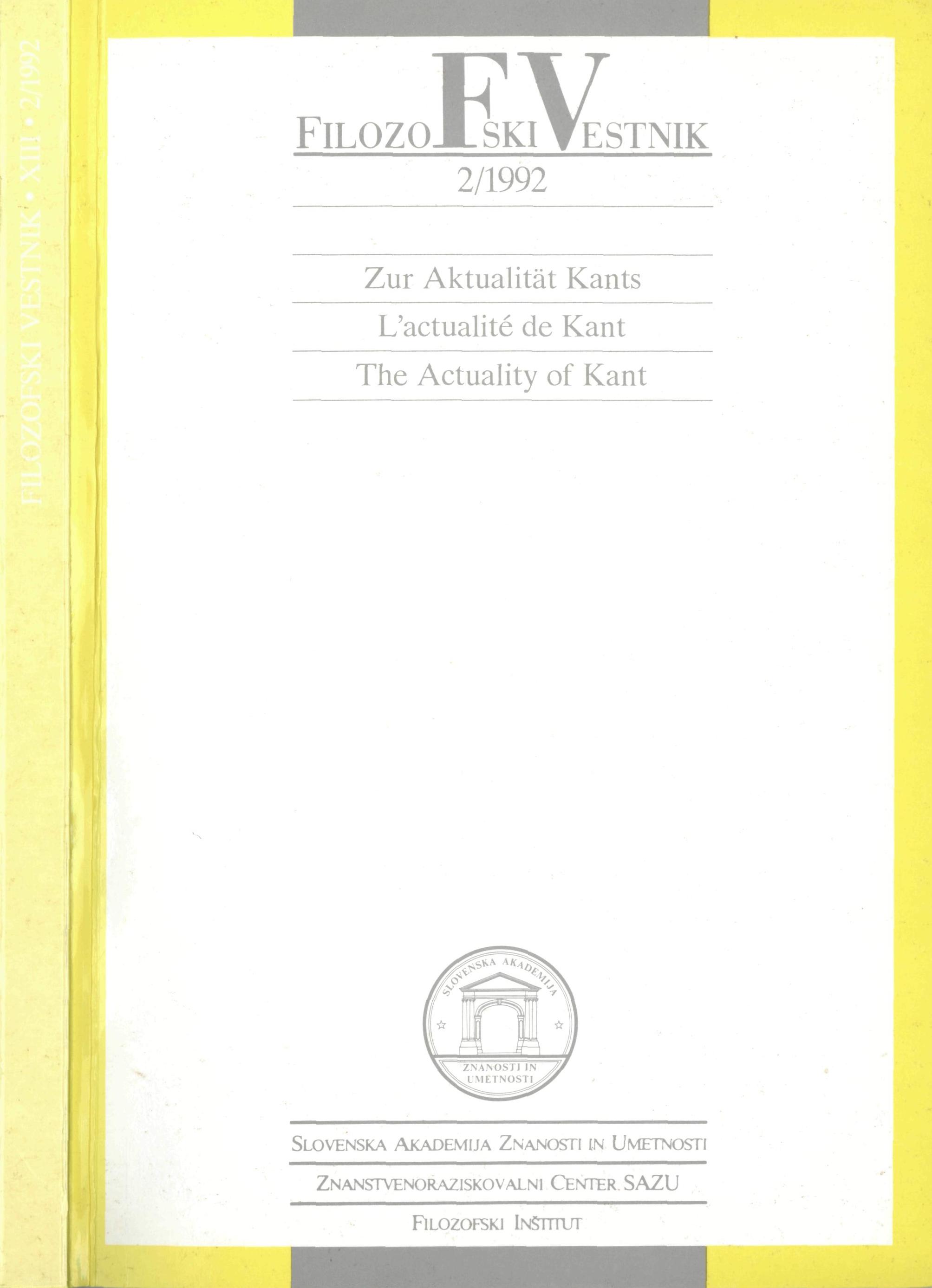Zapora izkustva
Povzetek
Kant zaključi tradicionalno epistemologijo ter utemelji estetiški pristop. To stori z razdelavo razlikovanja med reprezentacijo in objektom. Kant zanika ločljivost reprezentacije in njenega objekta. Reprezentacija in objekt nista ločljiva, ker ne moremo imeti objekta brez reprezentacije. Ce Kanta interpretiramo na tak način, ga zelo približamo Goodmanu. Tako kot je objekt odvisen od videza, tako je svet - po Goodmanu - odvisen od verzije. Goodmanova teza je, da le resnične (ali prave) verzije, in ne katerekoli, tvorijo svet. Po Kantu le empirične intuicije, se pravi videzi, tvorijo objekte - ne pa zamišljene intuicije. Oba trdita, da delujemo znotraj intuicij ali ustreznih verzij. To je zapora izkustva.Prenosi
Podatki o prenosih še niso na voljo.
Prenosi
Objavljeno
2016-01-21
Kako citirati
Birken-Bertsch, H. (2016). Zapora izkustva. Filozofski Vestnik, 13(2). Pridobljeno od https://ojs.zrc-sazu.si/filozofski-vestnik/article/view/3828
Številka
Rubrike
Articles
Licenca
Avtorji jamčijo, da je delo njihova avtorska stvaritev, da v njem niso kršene avtorske pravice tretjih oseb ali kake druge pravice. V primeru zahtevkov tretjih oseb se avtorji zavezujejo, da bodo varovali interese založnika ter da bodo povrnili morebitno škodo.
Podrobneje v rubriki: Prispevki





